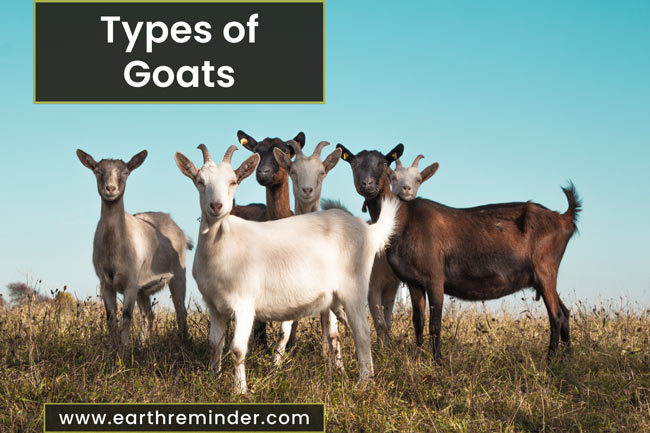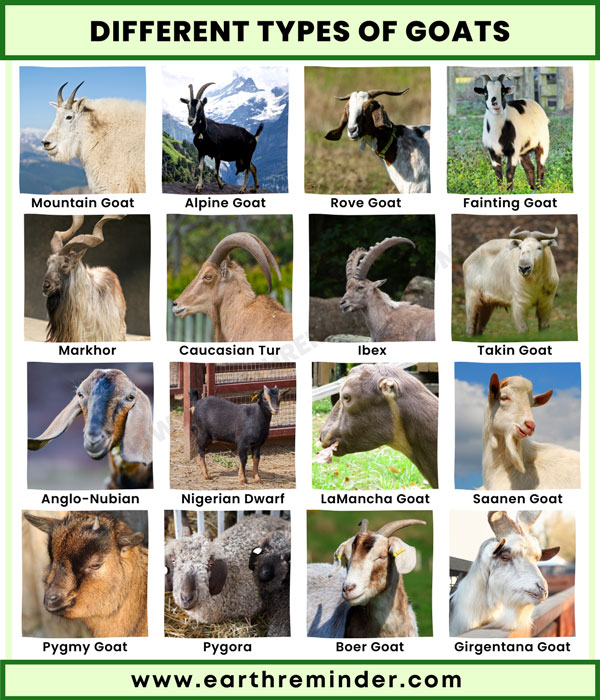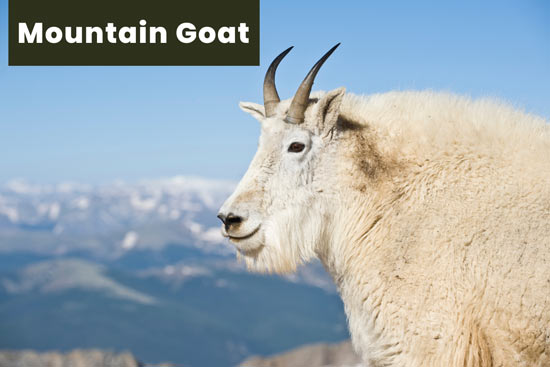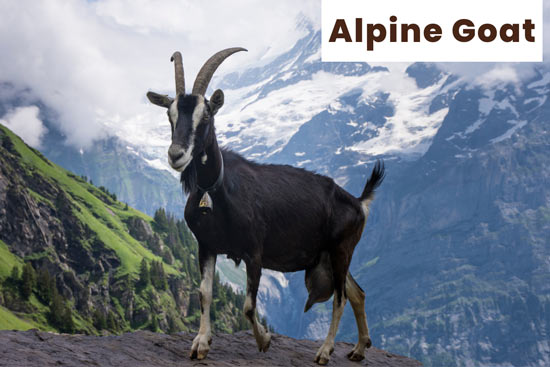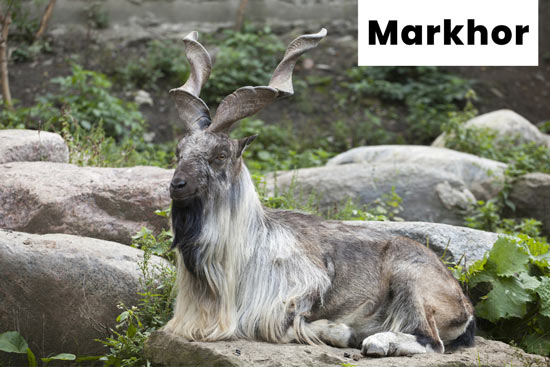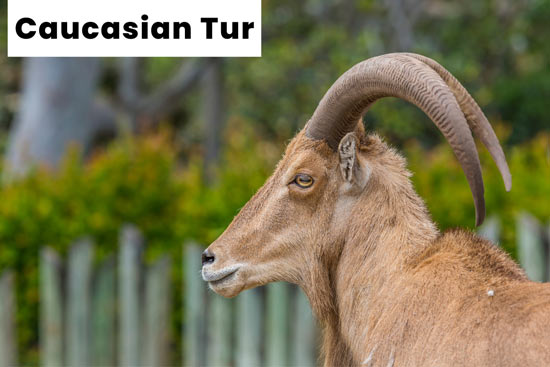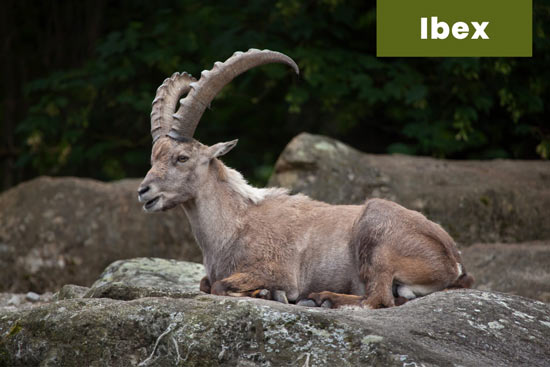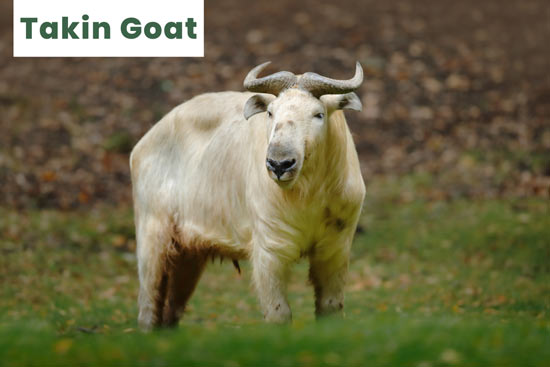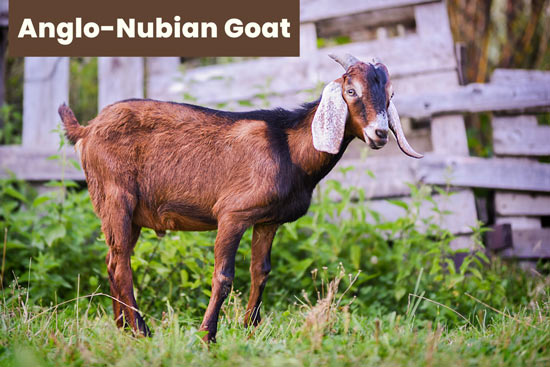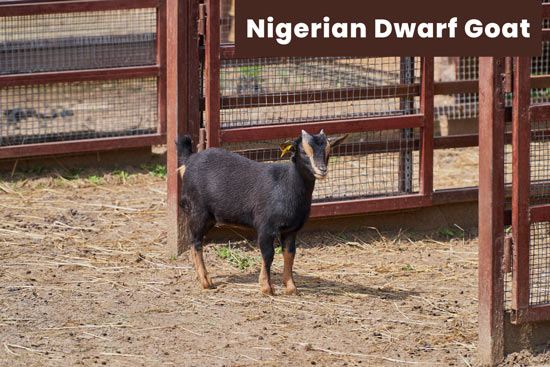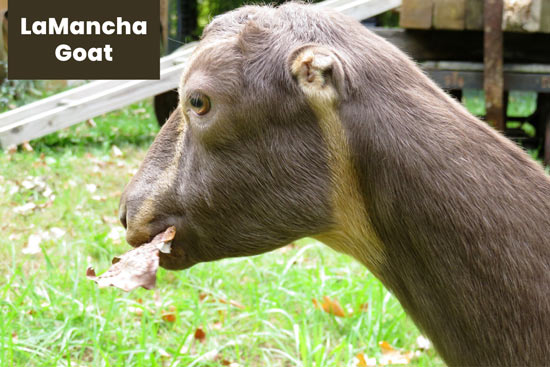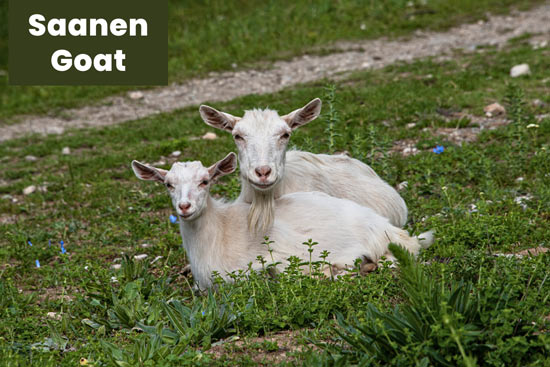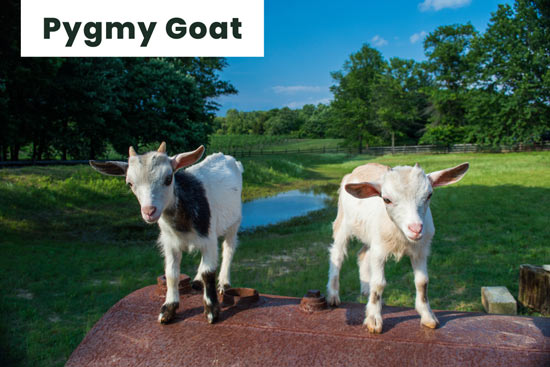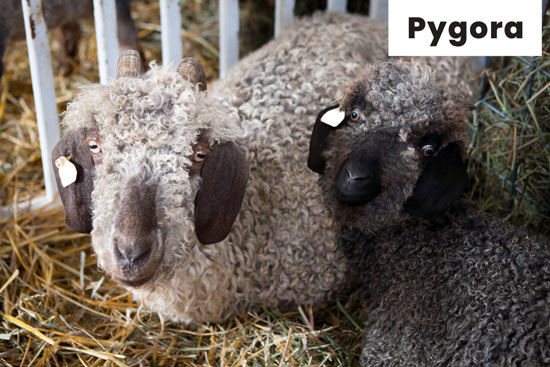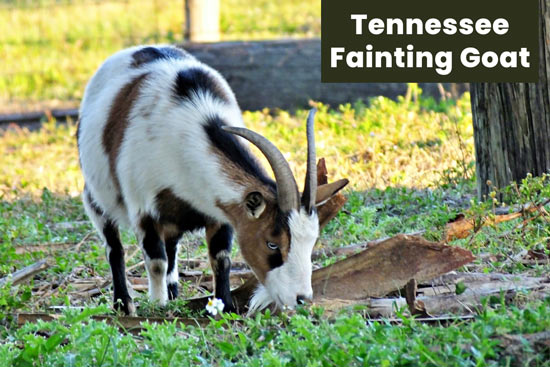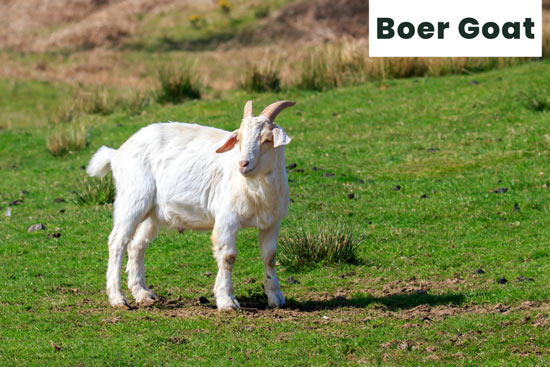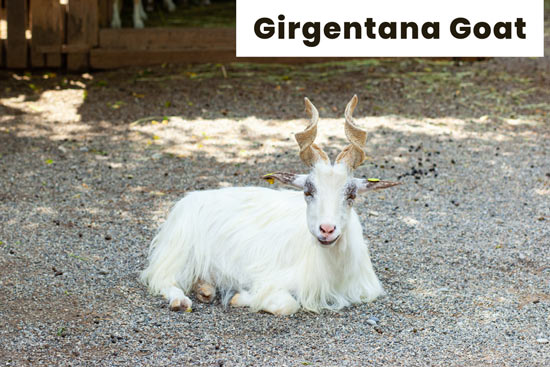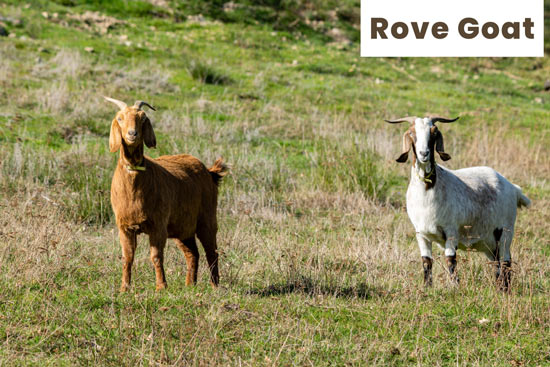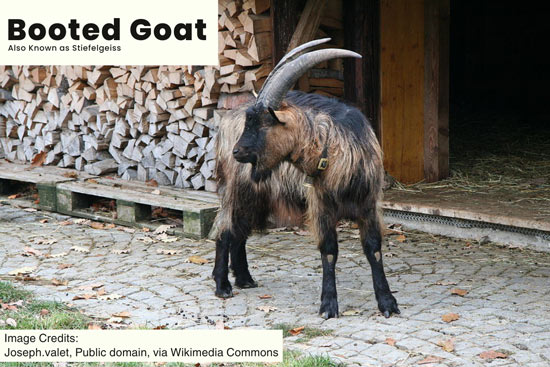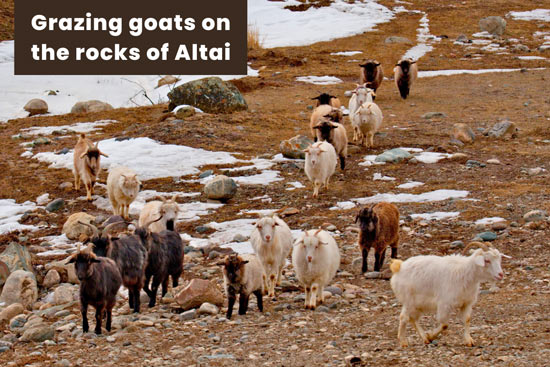19 Different Types of Goats
Humans have been raising goats for centuries, and they are truly remarkable species and great companions. They can do many things like giving us milk, meat, and even wool. There are various breeds of goats, each with their own characteristics. Some goats are very small, such as pygmy goats, whereas others are large and powerful, such as Boer goats. Here, we will learn about the different types of goats and what makes them unique from others.
Table of Contents
- 1 What Are Goats?
- 2 Types of Goats
- 2.1 Rocky Mountain Goat
- 2.2 Alpine Goat
- 2.3 Markhor
- 2.4 Caucasian Tur
- 2.5 Ibex
- 2.6 Takin Goat
- 2.7 Anglo-Nubian Goat
- 2.8 Nigerian Dwarf
- 2.9 LaMancha Goat
- 2.10 Saanen Goat
- 2.11 Pygmy Goat
- 2.12 Pygora
- 2.13 Tennessee Fainting Goat
- 2.14 Boer Goat
- 2.15 Girgentana Goat
- 2.16 Rove Goat
- 2.17 Booted Mountain Goat
- 2.18 Altai Mountain Goat
- 2.19 Carpathian Goat
- 3 Conclusion
What Are Goats?
Goats are domesticated animals with cloven hooves that are most frequently seen on farms and in meadows. They are among the most adaptable animals in the world and can live in environments ranging from deserts to mountains. The population of goats worldwide has more than doubled in the last 40 years, and there are about a billion goats in the world today. Goats have a wide variety of coat colors and patterns, which helps them blend into their environment. It is well known that goats are well suited to farming as well as keeping them as pets.
Types of Goats
There are various goat breeds on the planet. The most popular types of goats are booted mountain goat, alpine goat, Carpathian, Altai Mountain goat, markhor, Caucasian tur, ibexes, takin, Anglo Nubian goat, Nigerian dwarf, pygmy goat, Boer goat, and many more. Let’s learn more about them in detail below:
Rocky Mountain Goat
Scientific name: Oreamnos americanus
The Rocky Mountain goat is a large mammal found in the high-altitude regions of North America’s Rocky Mountains. With their muscular bodies, shaggy white fur, and specialized hooves, these goats can climb steep, rocky slopes.
The horns of males are thicker and have less space between them. Horns on females tend to be thinner and more spindly. Mountain goats eat grass, lichens, trees, ferns, herbs, and shrubs. The impressive climbing ability and striking appearance of these animals make them a popular sight in the Rockies.
Alpine Goat
Scientific name: Capra aegagrus hircus
The Alpine are medium-to-large goats that have been domesticated as mountain goats to produce a lot of milk. Their horns are straight, and their ears are erect. Their origins can be traced back to the French Alps.
There is no set color or marking for them. Their milk production makes them one of the most popular dairy and farming goats. While they are normally seen on farms and homesteads rather than roaming free.
Markhor
Scientific name: Capra falconeri
It’s a big Capra species that’s native to Central Asia, the Himalayas, and the Karakoram. Unlike other wild goats, markhors have vertically twisted horns. The markhor is also known as the screw-horned goat. It is Pakistan’s national animal. Since 2015, it has been listed as Near Threatened on the IUCN Red List.
Caucasian Tur
Scientific name: Capra caucasica
There are East Caucasian Tur and the West Caucasian Tur. They are mountain-dwelling goats. Azerbaijan, Georgia, and European Russia are home to the East Caucasian tur. It is also known as the Daghestani tur. West Caucasian tur is native to Georgia and European Russia in the western half of the Caucasus Mountains range.
Both kinds have short beards, thicker bodies, and shorter legs compared to wild goats. It inhabits rough mountainous terrain, where it eats grass and leaves.
Ibex
Scientific name: Capra ibex
The Ibex is one of several wild goat species with recurved horns, which are long and ridged in front. In Europe, Asia, and Africa, there are five different ibex species: the Spanish ibex, the Alpine ibex, the Nubian ibex, the Siberian ibex, and the Walia ibex. Plants, such as shrubs, bushes, and grasses, are their only food source.
Takin Goat
Scientific name: Budorcas taxicolor
The biggest member of the Caprinae subfamily, the takin is a goat antelope that is found in the eastern Himalayas. It is also known as the gnu goat or the cattle chamois. While it is more closely related to wild sheep, it looks more like a less shaggy musk ox.
The takin, despite its size, travels swiftly through dense bamboo woods and down steep rocky mountain slopes. Takins eat almost anything within reach when it comes to food. For example, the tough leaves of evergreen trees such as oaks and rhododendrons, bamboo leaves, willow and pine bark, and a variety of new-growth herbs and leaves. This species is further divided into four subspecies: Tibetan takins, Mishmi takins, Bhutan takins, and golden takins.
Anglo-Nubian Goat
Scientific name: Capra aegagrus hircus
You can always recognize a Nubian goat by its large, floppy ears, which look similar to rabbit ears. It’s a British goat breed. A mixture of Indian, Middle Eastern, and North African lop-eared goats crossed with native British goats in the nineteenth century led to this breed.
Producers of ice cream and cheese value Nubian milk’s high butterfat and protein content. Nubian goats consume shrubs and bushes as the primary source of their diet. They also like alfalfa and clover hay.
Nigerian Dwarf
Nigerian dwarf goats are, as their names suggest, dwarfs, measuring only 23.5 inches for males and 22.5 inches for females. They are miniature goats from West Africa.
Globally, they are domesticated dairy goats. Nigerian dwarf goats are appropriate for small farms due to their diminutive stature. Due to this, they produce less milk than other dairy goats. In some of them, horns are inherently absent, while in others, horns are present. Hay and forage are the best foods for Nigerian dwarf goats. While browsing, they feed on the tips of woody plants and trees.
Also Read: Importance Of Domestic Animals in Our Lives.
LaMancha Goat
It is also known as the American Lamancha. Its scientific name is Capra aegagrus hircus. LaMancha goats have a variety of colored coats, but what makes them stand out in a herd is their short ears or the absence of any noticeable ears.
The LaMancha goat is one of the sweetest and gentlest types of dairy goat and is one of the top milk producers, making them a wonderful pet as well. Lamancha goats eat grasses and leaves as their primary diet.
Saanen Goat
The Saanen breed originated in Switzerland and is distinguished by its uniform white hue and upright ears that lean slightly forward. Today, many countries consider it the most popular breed of dairy goat.
They are the largest dairy goat breed and the second-best milk producer, alongside Alpines.
Healthy Saanen goats over 2.5 years old, when well cared for and fed properly, can produce 700-900 liters of milk during a lactation period varying between 280 and 300 days. Since they’re so friendly and calm, they’re great for farms with kids. They eat grass, hay, and plants.
Pygmy Goat
Worldwide, pygmy goats are more frequently kept as pets than for milk production. Pygmy goats are indigenous to West Africa. Pygmies are intelligent, friendly, and social pets. They can survive almost any climate due to their high adaptability.
They have well-developed muscles and are relatively small. These miniature goats are just 16 to 23 inches tall and 53 to 86 pounds in weight.
Pygora
Pygora goats are observant, friendly, and simple to keep. A Pygmy and an Angora were crossed to create the Pygora goat breed. These goats have lovely fleece and are fiber goats.
Artists use Pygora fiber for knitting, spindling, spinning, weaving, etc. Pygora goats come in many colors, such as red, white, black, gray, brown, and even combinations of these colors. While they’re perfectly happy to munch on green grass, they also eat corn.
Tennessee Fainting Goat
This breed of goat is also known as the Myotonic goat. Tennessee fainting goats are frequently raised as pets due to their pleasant nature and ease of maintenance. When excited or startled, it may stiffen or fall over due to myotonia congenita, a hereditary condition.
Even though black and white are the most common colors, they come in many shades of color, markings, and patterns.
The body is strong and sturdy with lots of muscles. Myotonic goats’ hair can be of different lengths, from short and smooth to long and messy. Some even grow really thick hair in the winter that feels like cashmere. Unlike most pet breeds, they are better known for producing meat than milk. Their normal diet consists of leaves, grasses, and herbs.
Boer Goat
It is also known as the Boerbok. The Boer goat originated in Southern Africa. This goat has a high reputation as a meat goat, and many people love it. Several countries have exported it and used it to improve meat quality.
This goat is strong and has a sturdy body. Its horns are thick and curved, pointing backwards. Yet, not all boer goat horns look the same. The appearance of some of them is similar to that of pygmies due to their shorter, narrower, straighter, broad, and sturdy characteristics. Boer goats feed on pasture grasses naturally. They also eat shrubs, among other plants.
Girgentana Goat
Girgentana goats are domestic goats that originated in Girgenti (also known as Agrigento) in Sicily, Italy. This region gave it its name. These goats look different from others because they have long, twisted horns. They have long beards and small-medium erect ears on both bucks and does.
They are usually white, but some may have black or brown spots. Girgentana goats tolerate arid conditions, extreme temperatures, and barren landscapes. They are used mainly for their milk, which is very good for making cheese. Their diet includes shrubs, grass, natural pasture, twigs, and leaves.
Rove Goat
Rove goats are classified as medium-sized goats. The breed of goat known as the Rove goat comes from Le Rove, a small and beautiful village located near Marseille in the southern region of France.
This goat breed takes its name from the village it originates from, Le Rove. Rove goats have long, twisted horns. The horns can grow nearly four feet long. Rove goats display a variety of coat colors, including black, red, ash gray, and combinations of these colors. Their diet includes shrubs, bushes, and grasses, and they are great explorers.
Booted Mountain Goat
The Stiefelgeiss, also known as the Booted Goat, is a type of mountain goat found in the highlands of St. Gallen, Switzerland. A Stiefelgeiss goat has horns on both the male and female. There are fewer than 1,000 of these goats left in the world.
Since the area sees frequent snowfall, the booted mountain goat has adapted to the climate with a lengthy coat. Switzerland’s “Booted Goat Breeders Club” is working to revive the breed.
Altai Mountain Goat
Although it is a domestic goat as well along with the mountain goat, the Altai was born in the Gorno-Altai Autonomous Soviet Socialist Republic in the former Soviet Union through the mating of native goats with the Don goat (cross-breeding).
It is medium to modest in size. The Altai breed produces a lot of wool. During the cold, sturdy and cold-resistant clothing was necessary. Wool is available in gray, dark brown, or black shades.
Also Read: Mountain Ecosystem: Animals, Food Web and Facts.
Carpathian Goat
Carpathian goats were once found in mountainous regions of Poland, such as the Podkarpackie region. The Koza Karpacka, is another name for the Carpathian goat. They are native to the Carpathian Mountains in Eastern Europe, which also includes the chilly hills of Poland and Romania.
The goat is mostly white, but there are also fawn and brown color varieties. They have long hair to help them stay warm in the cold, yet they are in grave danger of extinction.
Conclusion
Goats have a long history as livestock species, and their presence around the world proves their adaptability. Goats are incredibly versatile animals with a wide range of shapes, sizes, breeds, and colors. In case you are in need of a goat for milk, fiber, companionship, or simply as a pet, there is a perfect breed available that will meet your needs. By understanding different types of goats, we can better appreciate their unique characteristics and their value to humankind.
